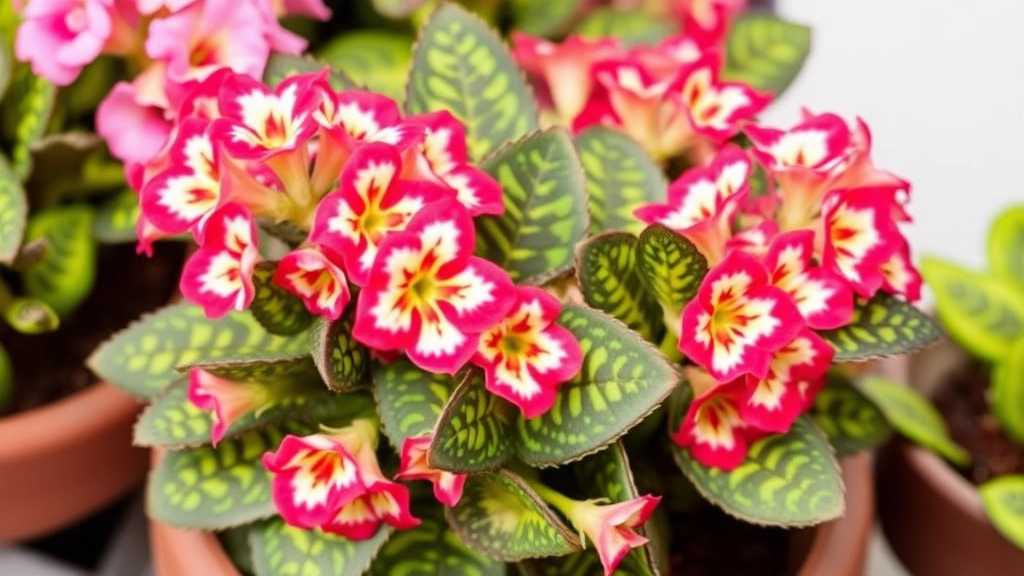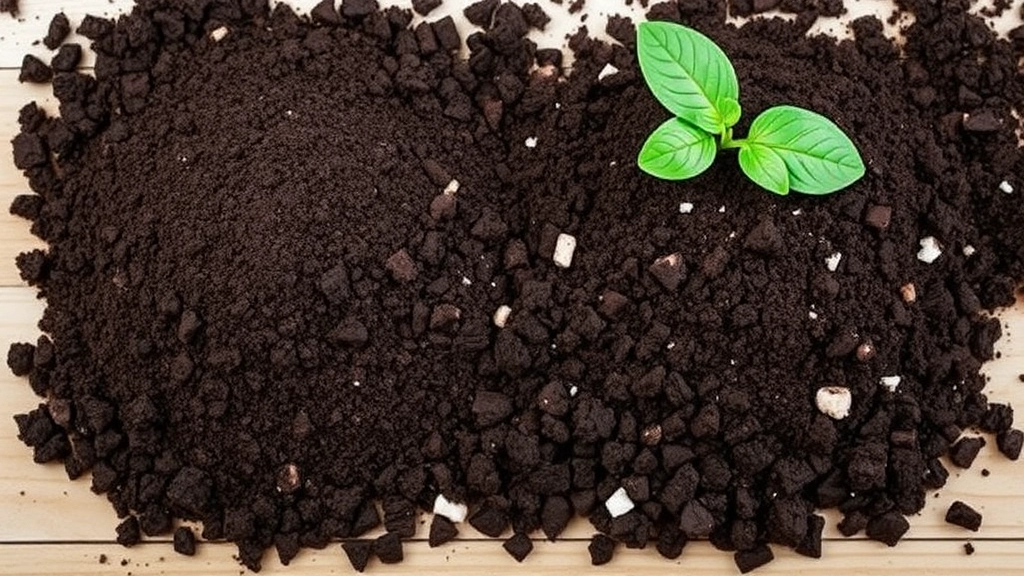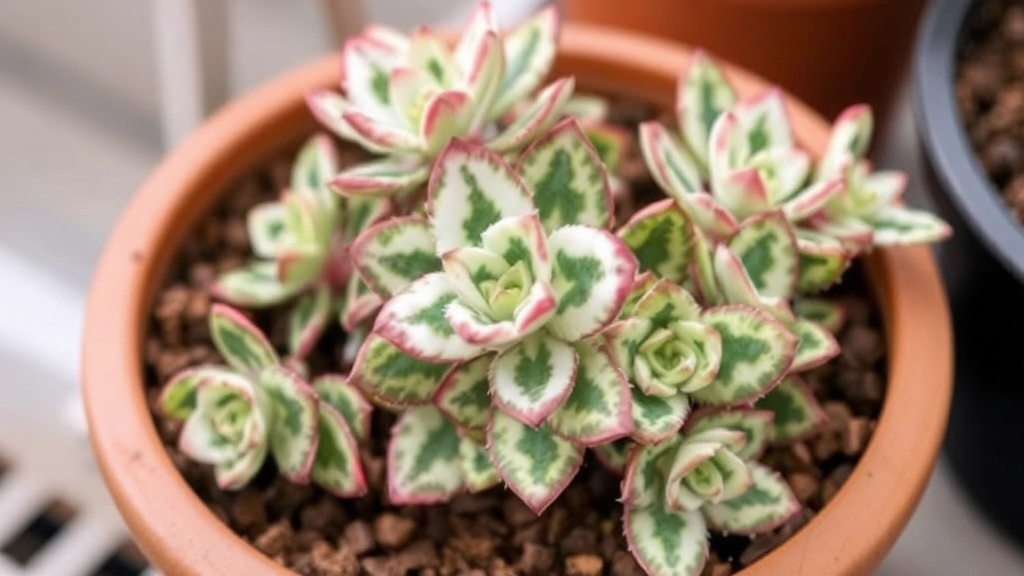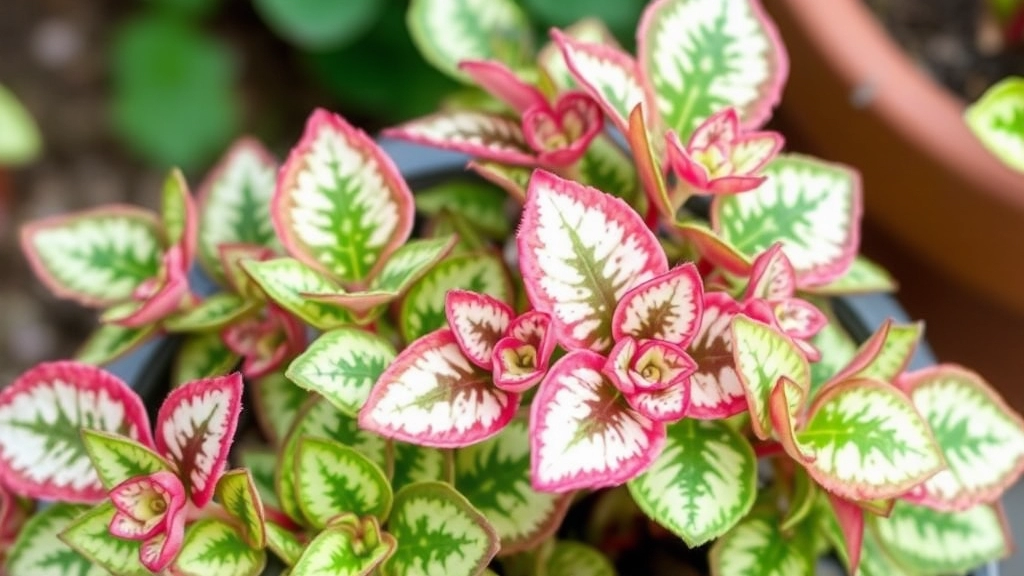Growing a Variegated Kalanchoe Plant
Are you interested in growing a Variegated Kalanchoe Plant? You’re in the right place! This guide will walk you through the simple steps to create the perfect environment for your plant to thrive. Whether you’re a seasoned gardener or a beginner, you’ll find these tips easy to follow and highly effective.
The Variegated Kalanchoe Plant is not only beautiful but also incredibly resilient. With a bit of attention and care, you can enjoy its unique foliage and vibrant colours. Let’s dive into the essentials of point creation for your Kalanchoe, ensuring you get the most out of this stunning plant.
Variegated Kalanchoe Plant Overview
Are you looking for a stunning plant to brighten up your space? The variegated Kalanchoe might just be what you need. Known for its unique leaf patterns and vibrant colours, this succulent is not only visually appealing but also relatively easy to care for.
Variegated Kalanchoe plants belong to the Crassulaceae family and are native to Madagascar. Their striking foliage often features shades of green, cream, and pink, making them a favourite among indoor gardeners and succulent enthusiasts alike.
These plants are perfect for anyone seeking low-maintenance greenery that adds character to their home or garden. With proper care, they can thrive for years, rewarding you with their beauty. For more detailed tips on how to care for your Kalanchoe, check out our expert guide on Kalanchoe care. Additionally, if you’re interested in different varieties, our comprehensive guide to Kalanchoe varieties will be highly beneficial.
Popular Varieties of Variegated Kalanchoe

So, you’ve decided to dive into the world of variegated Kalanchoe plants. Great choice! These beauties are not just easy on the eyes; they also come in some delightful varieties that can really spice up your collection.
1. Kalanchoe luciae (Paddle Plant)
This one’s a crowd-pleaser.
- Leaves: Thick, paddle-shaped with a stunning mix of green and red edges.
- Care: Super low-maintenance and loves bright light.
- Height: Can grow up to 30 cm tall.
2. Kalanchoe tomentosa (Panda Plant)
If you’re after something a bit fuzzy, this is it.
- Leaves: Soft, velvety leaves with a silvery-green hue and brownish edges.
- Care: Thrives in bright, indirect sunlight.
- Height: Typically reaches about 45 cm.
3. Kalanchoe blossfeldiana (Flaming Katy)
This one’s a classic, especially for those who love flowers.
- Leaves: Dark green with a lovely variegated pattern.
- Flowers: Comes in a variety of bright colours.
- Care: Prefers bright light and needs a bit more water than others.
4. Kalanchoe ‘Fang’
For a more unique twist, check out this variety.
- Leaves: Pointy, serrated edges that give it a fierce look.
- Care: Needs similar care to the Panda Plant.
- Height: Usually stays around 30 cm.
5. Kalanchoe ‘Aurora’
This one’s all about the pastel vibes.
- Leaves: Soft green with pink and cream edges.
- Care: Enjoys bright light but can tolerate some shade.
- Height: Grows up to 60 cm.
Ideal Growing Conditions for Variegated Kalanchoe
When considering the ideal growing conditions for your variegated Kalanchoe, it’s essential to understand what this unique plant thrives on. Many enthusiasts often worry about how to create the perfect environment to ensure their Kalanchoe flourishes.
Temperature and Humidity
- Temperature: Variegated Kalanchoe prefers a warm environment, ideally between 20°C to 25°C (68°F to 77°F).
- Humidity: This plant is quite tolerant of lower humidity levels but thrives in moderate humidity. Aim for around 40-60% humidity for optimal growth.
Location
- Indoor vs. Outdoor: If you’re growing indoors, place your Kalanchoe near a south-facing window where it can receive ample sunlight. Outdoors, ensure it’s sheltered from harsh winds and excessive rain.
Air Circulation
Good air circulation is vital. A well-ventilated area will help prevent fungal diseases and pests, ensuring your plant remains healthy.
Soil and Potting Mix Recommendations

Choosing the right soil for your variegated Kalanchoe is crucial for its growth and overall health.
Many plant enthusiasts often wonder: What type of soil is best for Kalanchoe?
The ideal soil should be well-draining, as these plants are susceptible to root rot if left in soggy conditions. Here are some recommendations to ensure your variegated Kalanchoe thrives:
- Cactus Mix: A commercial cactus potting mix is an excellent choice, as it allows for proper drainage while providing essential nutrients.
- DIY Mix: If you prefer a more hands-on approach, you can create your own mix by combining:
- 2 parts potting soil
- 1 part perlite or coarse sand
- 1 part orchid bark
This blend promotes aeration while retaining just enough moisture.
- pH Levels: Aim for a soil pH between 6.0 and 7.0, which is slightly acidic to neutral. This range supports nutrient availability.
When potting your variegated Kalanchoe, choose a container with drainage holes. This prevents water accumulation, ensuring your plant’s roots remain healthy.
When it comes to caring for your Variegated Kalanchoe, one of the most pressing concerns is how to get the watering just right. Overwatering or underwatering can lead to serious issues, so understanding the specific needs of this plant is essential.
### Key Watering Guidelines
– **Soil Moisture**: Always check the top inch of the soil. If it feels dry, it’s time to water.
– **Frequency**: Generally, watering every two to three weeks is ideal, but this can vary based on the season.
– **Seasonal Adjustments**: During the growing season (spring and summer), your Kalanchoe will need more frequent watering. In the dormant months (autumn and winter), reduce watering to avoid root rot.
– **Watering Technique**: Water deeply but infrequently. Ensure water drains out of the pot’s bottom to prevent standing water.
### Signs of Watering Issues
– **Underwatering**: If the leaves start to wrinkle or shrivel, it may be a sign that your plant needs more water.
– **Overwatering**: Yellowing leaves or a mushy stem indicates that you might be giving your Kalanchoe too much water.
For more detailed care tips, you might find our [ultimate guide to variegated Kalanchoe care](https://planthq.org/ultimate-guide-to-variegated-kalanchoe-care-tips/) helpful. Additionally, if you’re experiencing issues with your plant, our article on [why your Kalanchoe leaves are dying](https://planthq.org/why-are-my-kalanchoe-leaves-dying-causes-solutions/) provides useful insights.
Light and Temperature Needs

So, you’ve got your variegated Kalanchoe, and now you’re wondering, “How much light does this beauty need?”
Well, let me tell you, these plants are pretty flexible, but they thrive best in bright, indirect sunlight.
Light Requirements:
- Bright, Indirect Light: Aim for around 6 hours a day.
- Avoid Direct Sun: Too much can scorch those lovely leaves.
- Supplement with Artificial Light: If you’re in a gloomy area, consider grow lights to keep your Kalanchoe happy.
Now, let’s talk temperature.
Temperature Preferences:
- Ideal Range: Keep it between 15°C to 25°C (59°F to 77°F).
- Avoid Cold Drafts: They’re not fans of sudden temperature drops.
- Winter Care: If you live in a cooler climate, bring them indoors to protect them from frost.
Quick Tips:
- Rotate your plant every few weeks to ensure even light exposure.
- If the leaves start to stretch or lose their vibrant colour, it’s a sign they need more light.
Fertilization Tips for Variegated Kalanchoe
When it comes to keeping your variegated Kalanchoe thriving, fertilization is a key component that often raises questions. How do you ensure your plant gets the nutrients it needs without overwhelming it?
Understanding Fertilization Needs
Variegated Kalanchoes are relatively low-maintenance when it comes to fertilization. However, providing the right nutrients can significantly enhance their growth and vibrancy. Here are some essential tips:
- Frequency: Fertilize your Kalanchoe every 4-6 weeks during the growing season (spring and summer). This ensures your plant receives consistent nutrients as it actively grows.
- Type of Fertilizer: Use a balanced, water-soluble fertilizer with an N-P-K ratio of 20-20-20 or a specific succulent fertilizer. This promotes healthy growth without excessive foliage.
- Dilution: Always dilute the fertilizer to half the recommended strength. This prevents fertilizer burn, which can damage the delicate roots of your Kalanchoe.
- Application Method: Apply the fertilizer directly to the soil, avoiding the leaves. Water the plant beforehand to help the roots absorb the nutrients effectively.
- Seasonal Adjustments: Reduce or stop fertilization during the fall and winter months when the plant enters dormancy.
By adhering to these fertilization tips, you can ensure that your variegated Kalanchoe remains healthy and vibrant. For more detailed care instructions, check out our complete care guide for Kalanchoe Beharensis Variegated. Additionally, if you’re looking to propagate your plant, our variegated Kalanchoe propagation guide offers simple and effective methods.
Common Pests and Diseases

So, you’ve got your beautiful variegated Kalanchoe thriving, but what happens when those pesky pests or diseases come knocking?
Common Pests:
- Mealybugs
– These little white cottony bugs can be a nightmare.
– They suck the sap from your plant, leading to wilting.
– Check the undersides of leaves and in leaf joints for signs. - Aphids
– Tiny green or black bugs that can multiply quickly.
– They also feed on sap and can cause leaf curling.
– Keep an eye out for sticky residue or black sooty mould. - Spider Mites
– These tiny red or brown pests thrive in dry conditions.
– Look for fine webbing on your plant.
– They can cause yellowing leaves and overall decline.
Common Diseases:
- Root Rot
– Overwatering is the main culprit here.
– If the leaves are yellowing and mushy, it might be too late.
– Always check the roots; they should be firm, not slimy. - Leaf Spot
– This can be caused by fungal infections.
– Look for dark spots on the leaves.
– Ensure good air circulation to help prevent this. - Powdery Mildew
– A white, powdery fungus that appears on leaves.
– Usually a sign of too much humidity.
– Try to keep your Kalanchoe in a well-ventilated area.
Preventive Measures:
- Regular Checks:
Keep an eye on your plant and inspect it weekly. - Proper Watering:
Avoid overwatering to prevent root rot. - Good Air Circulation:
Ensure your plant isn’t crowded by other plants. - Neem Oil:
A natural way to deter pests. Just spray it on the affected areas.
Pruning and Maintenance
Pruning and maintenance are crucial for keeping your variegated Kalanchoe plant healthy and vibrant.
Many plant owners worry about how to properly care for their Kalanchoe, especially when it comes to pruning.
Why Prune Your Variegated Kalanchoe?
Pruning serves several purposes:
- Encourages Growth: Regular pruning stimulates new growth, ensuring your plant remains bushy and full.
- Removes Dead or Diseased Leaves: This helps prevent the spread of pests and diseases.
- Shapes the Plant: Pruning allows you to maintain the desired shape and size of your Kalanchoe.
When to Prune
The best time to prune your variegated Kalanchoe is during the growing season, typically in spring or early summer.
This is when the plant is most active and can recover quickly from any cutting.
How to Prune
- Gather Your Tools: Use clean, sharp scissors or pruning shears.
- Identify the Areas to Cut: Look for dead leaves, stems, or any leggy growth.
- Make Clean Cuts: Cut just above a leaf node to encourage new growth.
- Dispose of Clippings: Always remove clippings from the pot to prevent rot.
Maintenance Tips
Propagation Techniques for Variegated Kalanchoe

So, you love your Variegated Kalanchoe and want more of them? I get it! Propagation is a fun and rewarding way to expand your plant family.
Why Propagate?
You might be wondering why you’d want to propagate your Kalanchoe. Well, it’s not just about having more plants. It’s also about sharing them with friends or even creating a lovely gift. Plus, it’s a great way to keep those gorgeous variegated leaves thriving!
Methods of Propagation
Here are some easy methods to propagate your Variegated Kalanchoe:
- Leaf Cuttings:
- Choose a healthy leaf from your plant.
- Cut it off cleanly using a sharp knife.
- Let it sit for a few hours to callous over.
- Place the leaf in well-draining soil and water sparingly.
- Stem Cuttings:
- Take a cutting from a healthy stem, about 4-6 inches long.
- Remove the lower leaves.
- Allow the cutting to dry for a day or two.
- Plant it in soil and water lightly.
- Offsets:
- If your Kalanchoe produces offsets (little plantlets), gently separate them from the main plant.
- Plant them in their own pots with fresh soil.
Tips for Successful Propagation
- Timing: Spring or early summer is the best time to propagate. The plant is actively growing, making it easier for cuttings to root.
- Humidity: Keep the cuttings in a humid environment. A plastic bag or a mini greenhouse can work wonders.
- Patience: It may take a few weeks for roots to develop. Don’t rush it!
- Light: Place your cuttings in bright, indirect light. Too much direct sun can scorch them.
By following these simple propagation techniques, you’ll soon have a thriving collection of Variegated Kalanchoe plants!
Decorative Uses in Home and Garden
When it comes to enhancing the aesthetic appeal of your home or garden, the variegated Kalanchoe plant is a fantastic choice. You might be wondering how to best showcase this stunning plant in your space.
Versatile Display Options
The variegated Kalanchoe’s vibrant foliage and unique patterns make it an eye-catching addition to various settings. Here are some creative ways to incorporate it into your decor:
- Indoor Displays: Place your Kalanchoe in decorative pots on windowsills or shelves to brighten up indoor spaces.
- Table Centerpieces: Use them as striking centerpieces for dining or coffee tables, adding a touch of nature to your gatherings.
- Hanging Baskets: Their trailing growth habit makes them ideal for hanging baskets, bringing life to vertical spaces.
- Garden Borders: Plant them along garden borders or pathways for a lively splash of colour.
Seasonal Arrangements
Kalanchoes can also be used in seasonal decorations.
- Spring and Summer: Combine them with other flowering plants for a vibrant, colourful display.
- Autumn and Winter: Pair them with seasonal decor like pumpkins or festive ornaments to create a warm atmosphere.
Container Gardening
If you’re limited on space, consider container gardening.
- Mix and Match: Combine variegated Kalanchoes with other succulents or ornamental grasses for a diverse look.
- Size Matters: Choose containers of varying heights to create visual interest.
Outdoor Spaces
For those with gardens, these plants can thrive outdoors as well.
- Rock Gardens: Their drought tolerance makes them perfect for rock gardens.
- Patio Decor: Use them in patio arrangements to create a welcoming outdoor environment.
Incorporating variegated Kalanchoe into your home and garden not only enhances beauty but also brings a sense of tranquility. For more tips on how to care for your Kalanchoe, check out our expert care guide. Additionally, if you’re interested in unique varieties, don’t miss our article on Blue Kalanchoe varieties.
FAQs on Variegated Kalanchoe Plants
What are some popular varieties of variegated Kalanchoe plants?
There are several popular varieties of variegated Kalanchoe plants, including:
- Kalanchoe luciae (Paddle Plant): Known for its thick, paddle-shaped leaves with green and red edges.
- Kalanchoe tomentosa (Panda Plant): Features soft, velvety leaves with a silvery-green hue and brownish edges.
- Kalanchoe blossfeldiana (Flaming Katy): Recognizable by its dark green variegated leaves and bright flowers.
- Kalanchoe ‘Fang’: Has pointy, serrated leaves that give it a unique look.
- Kalanchoe ‘Aurora’: Boasts soft green leaves with pink and cream edges.
What type of soil is best for variegated Kalanchoe plants?
The ideal soil for variegated Kalanchoe plants should be well-draining to prevent root rot. A commercial cactus potting mix is a great choice, or you can create your own mix by combining:
- 2 parts potting soil
- 1 part perlite or coarse sand
- 1 part orchid bark
Aim for a soil pH between 6.0 and 7.0, which is slightly acidic to neutral.
How much light do variegated Kalanchoe plants need?
Variegated Kalanchoe plants thrive best in bright, indirect sunlight. Aim for around 6 hours of light per day. Avoid direct sun as it can scorch the leaves. If natural light is insufficient, supplement with artificial grow lights.
What are the temperature preferences for variegated Kalanchoe plants?
These plants prefer temperatures between 15°C to 25°C (59°F to 77°F). Avoid exposing them to cold drafts or sudden temperature drops. In cooler climates, bring them indoors during winter to protect them from frost.
What are common pests and diseases that affect variegated Kalanchoe plants?
Common pests include mealybugs, aphids, and spider mites. Diseases to watch out for include root rot, leaf spot, and powdery mildew. Regular checks, proper watering, and good air circulation can help prevent these issues.
How can I propagate my variegated Kalanchoe plant?
There are several methods to propagate variegated Kalanchoe plants:
- Leaf Cuttings: Cut a healthy leaf, let it callous, and plant it in well-draining soil.
- Stem Cuttings: Take a stem cutting, let it dry, and plant it in soil.
- Offsets: Separate offsets from the main plant and pot them individually.
Spring or early summer is the best time for propagation. Keep the cuttings in a humid environment and place them in bright, indirect light.
What are some quick tips for maintaining a healthy variegated Kalanchoe plant?
Here are a few tips to keep your variegated Kalanchoe thriving:
- Rotate the plant every few weeks for even light exposure.
- If leaves start to stretch or lose color, increase light exposure.
- Inspect the plant weekly for pests and diseases.
- Use neem oil as a natural pest deterrent.
References
-
Gardening Know How – Variegated Kalanchoe Care
-
The Spruce – Growing Kalanchoe Indoors
-
Gardenista – Gardening 101: Kalanchoe
